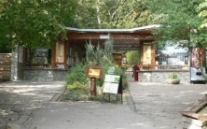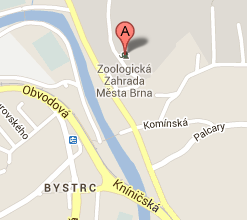The multi-year Little Owl (Athene noctua) Protection Project operating in south Moravia continued at Brno Zoo in 2013 in cooperation with our partner organisation, the Bfieclav branch of the Czech Union for Nature Conservation. The project took place on three levels – the monitoring of the natural occurrence of the species, the provision of safe nesting conditions and the release of individuals raised in captivity. In 2013 Brno Zoo only managed to raise one little owl chick; however, this result corresponded with the situation in the wild, where unfavourable climatic and dietary conditions led to poor nesting results for birds of prey and owls. The young bird was released into the wild on 16th September in the surroundings of the village of Bartošovice in Moravia by staff members from the local animal rescue station who had also contributed to the owl
protection project.
Also in 2014, our participation in the Protection of Little Owls in South Moravia project continued. The little owl population was monitored regularly in the area of interest. Special bird boxes which prevent predators from entering were produced and distributed, and the protection of little owls was promoted to the general public. The work was carried out in partnership with the Czech Union for Nature Conservation and the Animal Rescue Station in Bartošovice na Moravě. A new development was the telemetry monitoring of zoo-raised individuals which were subsequently released into the wild. The transmitters were attached to the owls on 21st August, and after a week-long period of monitoring the birds in the large pre-release aviary, their release into the wild took place on 29th August. The village of Vražné, which can be found in the southern tip of the Poodří protected landscape area, was selected as a suitable place; the owls were scattered around the area after being let go. We recorded two of them about a month later at distances of 9.5 and 11 km from the place of their release. The telemetry monitoring took place from 29th August till 7th December and proved that little owls raised in captivity are capable of surviving in the wild. As part of our educational activities, we decided to acquire a sound module which was placed on the panel located in the zoological gardens that displays information about the life of little owls and their area of occurrence. The module can be used to play the three most frequent sounds emitted by little owls – mating, warning and protracted calls.
The multi-year Little Owl (Athene noctua) Protection Project operating in Southern Moravia continued at Brno Zoo in 2015. Brno Zoo remains mainly involved by regular monitoring of the population of little owls in the project area, by manufacture and installation of special birdhouses and by promotion of the protection of little owls among the general public. A group of six young little owls (2015 nesting) was prepared and successfully released into the wild in PLA Poodří in cooperation with rescue station for handicapped animals in Bartošovice. The little owls had Biotrack radios fastened to their backs for the opportunity for telemetric monitoring of the released birds. Results of the telemetry show that little owls bred in captivity are able to survive in the wild.
In 1950´s was the Little owl one of the most abundant owl species. Today there are only 250–500 couples in the whole Czech Republic. Decline is caused by using rodent’s poisons, closing attics and spiracles, grubbing old trees with cavities, increasing populations of stone martens, which are their predators, danger as car transport etc. Little owls are strictly adhered with habitat. If their partner will perish, they often don’t find other.







.jpg)
